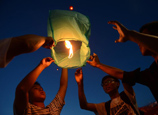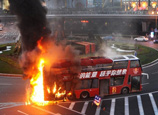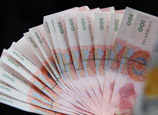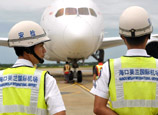
The Cemetery of Confucius is also known as “Konglin” or the “Sacrosanct Cemetery,” and is located one kilometer north of Qufu. It was used as the family cemetery of Confucius and his descendants for about 2,500 years and has tens of thousands of tombs. The cemetery covers an area of about two square kilometers. The cemetery’s entrance is at the end of a 1,266-meter-long sacred path that is connected with the city’s north gate. The straight and smooth sacred path is lined with Chinese junipers on the both sides, giving visitors a majestic and solemn feeling. After entering the grand first gate of the cemetery, visitors will be placed in a closed space between the first gate and the second gate formed by the tall bounding walls, and a path between the red walls surrounded by the tall and straight Chinese junipers will lead them to the tall second gate tower. After passing through the second gate, a natural scene of forests, grass and streams come into view to inspire their spirits. Visitors will enter the cemetery after turning towards the west and crossing the Zhushui Bridge. They will walk along the central axis by passing the tomb door, a paved path and Xiangdian Hall the before entering worship palace. As this is the place where a great man is buried, it makes people feel emotional. People will wander around and not bear to leave. The total area of the cemetery is two million square meters. There are tombs, steles, stonework, and lofty old trees inside the cemetery.
The cemetery has tens of thousands of tombs of Confucius and his descendants in various dynasties. In addition to the steles from the Han dynasty which were moved in the Temple of Confucius, the cemetery reserves a total of more than 4,000 tombstones and inscribed stones from various dynasties including the Song, Jin, Yuan, Ming, Qing dynasties and the Republic of China period. It also reserves nearly 1,000 stoneworks such as stone figures of humans, horses, sheep, lions, as well as baluster columns, altar tables, and memorial archways, a kind of memorial arch, from the Song, Ming and Qing dynasties. In order to embody Confucianism and meet the needs of offering sacrifices, there are also more than 60 buildings constructed in Ming and Qing dynasties such as gates, memorial arches, Xiangdian palaces, and stone-tablet pavilions. The Cemetery of Confucius is the final resting grounds of the descendants of Confucius from the Zhou Dynasty without interruption. The latest tomb owner in the cemetery is the 76th-generation oldest male direct decedent of Confucius or his 78th-generation male indirect decedent. Before the Cemetery of Confucius, there were no other such places in the world that possess such a long history, plenty of tombs, and were so well preserved. This is a product of the dominant position of Confucianism during the long history of Chinese feudal society. The rich relics in the cemetery have a high value for the research of the Chinese burial system, as well as the politics, economy, culture, customs, calligraphy and art in ancient China.
The Kong Family Mansion, also known as the “Official Residence of the Confucius Family” and located to the east of the Temple of Confucius at No.1 Donghuamen Street in Qufu, is the residence of Confucius descendants. The Kong Family Mansion was established during the Song and Jing dynasties (from the 12th to 13th century A.D.), and was moved to its current site in the 10th year of Emperor Hongwu (1377 AD). The Kong Family Mansion is a typical feudal aristocrat manor and covers an area of about 49,000 square meters. It contains a total of more than 480 various rooms including an attic, studies, living rooms, and halls. The mansion is the official residence of Confucius descendants. Confucius descendants have always followed the teachings of their forefathers to maintain the traditional study of quintessence and etiquette. Therefore, the construction of the Kong Family Mansion was restricted by Confucian etiquette, leaving the marks of the Confucian patriarchal system and Confucian ethical concepts. The structure of the mansion also followed the traditional Chinese architectural mode and it was divided into two parts, the antechamber and the living space. The antechamber included the Guanya hall, the east study which is an ancestral temple of Kong Family, and the west study which is room for receiving honored guests and for study. These rooms were for conducting official business and receiving guests. The living space included the inner chambers, reception rooms and the Yiguantang which is a place for family life.


















 Teenage crash victims were talented students
Teenage crash victims were talented students


![]()
